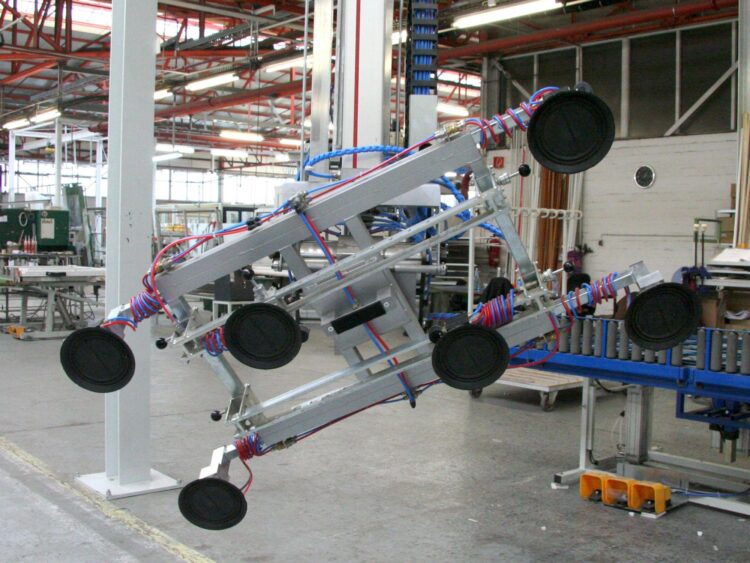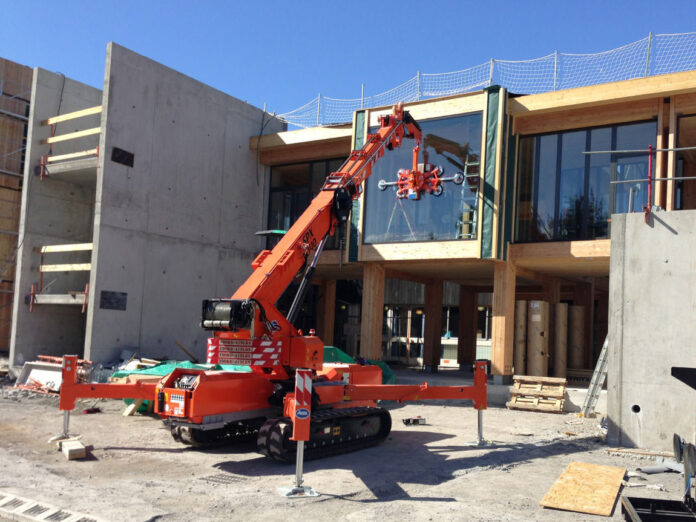The world is swiftly moving towards automation and robotics, becoming a ubiquitous feature in various industries. A key sector experiencing this revolution is the glass lifting industry. With the rise of awe-inspiring architectural feats and grand structures with extensive glass facades, the importance of robotics in glass handling operations has become ever so crucial.
In this article, we will delve into the myriad ways these machines have transformed the traditional glass lifting and handling practices. We will discuss aspects ranging from enhanced efficiency to improved safety measures, precise glass positioning, handling of large glass panels, customization, and adaptability, integration with other technologies, remote operation and monitoring, cost-effectiveness, and the future prospects of robotics in this industry.
Improved Efficiency and Productivity

Gone are the days of slow, painstakingly manual glass lifting processes. Robotics automation has revolutionized this area by enhancing productivity and ensuring time-efficient operations. For instance, automated lifters like the Smartlift® Automated Glass Lifter simplify the handling process significantly.
They’re capable of maneuvering glass panels into place swiftly, reducing the time taken for installations and repairs. This efficiency translates into a direct increase in productivity, enabling firms to undertake more projects and subsequently boosting their profitability.
Enhanced Safety Measures
One of the most notable benefits of robotics in the glass lifting industry is improved safety. Traditional glass lifting is fraught with risk, including accidents during handling, cuts, and other injuries. However, robotics has helped minimize these risks dramatically, and this company is a proof of that.
Also, these systems are designed with advanced safety features like pressure sensors, emergency stop mechanisms, and load detection, which ensure safe operation. For example, the SPIDERGLASS system developed by Jekko provides a prime example of a highly safe robotic system for handling glass.
Precise and Accurate Glass Positioning

Precision and accuracy are key in the glass lifting industry, especially when installing large or intricate glass panels. Robotic systems like MRK Systeme GmbH’s robot-guided vacuum lifting devices allow for incredibly accurate positioning, drastically reducing errors and the need for rework.
The precision of these systems enhances not only the final product’s aesthetics but also its structural integrity, which is particularly important in large-scale constructions and renovations.
Handling Heavy and Large Glass Panels
The introduction of robotics in this industry has brought about a significant breakthrough in handling heavy and these systems are not bound by the weight and size limitations that can impede manual labor.
They possess the remarkable ability to effortlessly lift and maneuver glass panels of substantial dimensions and weight. A prime example is the ROBOSPIRIT developed by SPIRIT GmbH, which exhibits the capability to handle panels weighing up to an astonishing 1000 kg. Such a remarkable feat showcases the immense potential of robotics in surpassing the physical limitations of traditional glass lifting methods.
Customization and Adaptability
One of the most enticing aspects of robotics lies in its remarkable flexibility and adaptability. With the ability to be programmed and adjusted, robotic systems effortlessly handle a wide array of glass types and shapes, catering to the diverse demands of various projects. Unlike human workers who might face considerable challenges, they excel at managing intricate designs and executing customized installations.
An exemplary demonstration of this adaptability can be found in the FANUC M-2000iA/1200 robotic system, which showcases its versatility by effortlessly undertaking an immense range of tasks through precise programming. The unmatched adaptability of robotics empowers the glass lifting industry to tackle complex projects with ease and efficiency.
Integration with Other Technologies

Robotics doesn’t operate in isolation. The integration of robotics with other advanced technologies such as sensors, machine learning, and artificial intelligence enhances the efficiency and functionality of glass lifting operations.
For instance, the use of vision systems and AI algorithms in these systems allows them to identify and navigate the installation space, reducing the risk of error and damage. A perfect example is the KUKA’s KR QUANTEC series robots, which integrate sensor technology and AI to improve precision and efficiency.
Remote Operation and Monitoring
One significant advantage offered by robotics in the glass lifting industry is the ability for remote operation and monitoring. Robotic systems can be controlled remotely, eliminating the need for workers to be physically present in potentially hazardous environments. This feature not only enhances safety but also increases flexibility and accessibility in glass lifting operations.
Furthermore, robotics enable real-time monitoring and adjustments, ensuring optimal performance and efficiency. A notable example showcasing these capabilities is ABB’s RobotStudio, which provides advanced features for remote control and monitoring of these systems. With remote operation and real-time monitoring, the glass lifting industry can achieve heightened safety, improved efficiency, and seamless performance in a range of applications.
Cost-effectiveness and Return on Investment

Incorporating robotics in glass lifting operations might seem like a significant initial investment, but it leads to substantial cost savings in the long run. Robotics reduces labor costs, minimizes rework expenses due to fewer errors, and increases productivity, ensuring an attractive return on investment. Many companies have reported significant cost savings and ROI after implementing robotic systems like those offered by the likes of Glaston Corporation.
Future Prospects and Advancements
The potential advancements and future developments in robotics for the named industry are incredibly exciting. The emergence of technologies such as collaborative machines, AI-powered decision making, and advanced sensor integration holds the promise of further revolutionizing the industry. Companies at the forefront of innovative thinking, like Boston Dynamics, are showcasing remarkable advancements with robots like Atlas.
These advancements provide a tantalizing glimpse into what the future may hold. With collaborative robots working alongside human operators, intelligent systems making informed decisions, and sensors seamlessly integrating with these technologies, the glass lifting industry is poised for a transformation that will enhance efficiency, safety, and overall performance. The possibilities are vast, and the potential for groundbreaking developments in the near future is truly remarkable.
Conclusion
Robotics has had a transformative impact on the glass lifting industry. It has enhanced efficiency and productivity, improved safety, enabled precise and accurate glass positioning, revolutionized the handling of heavy and large glass panels, offered customization and adaptability, and integrated with other technologies for superior performance.
Additionally, it provides remote operation and monitoring capabilities and offers cost-effectiveness, promising a solid return on investment. The future of the glass lifting industry is undeniably intertwined with robotics, and the continuous advancements in this field hold immense promise for even more innovation and revolution.







